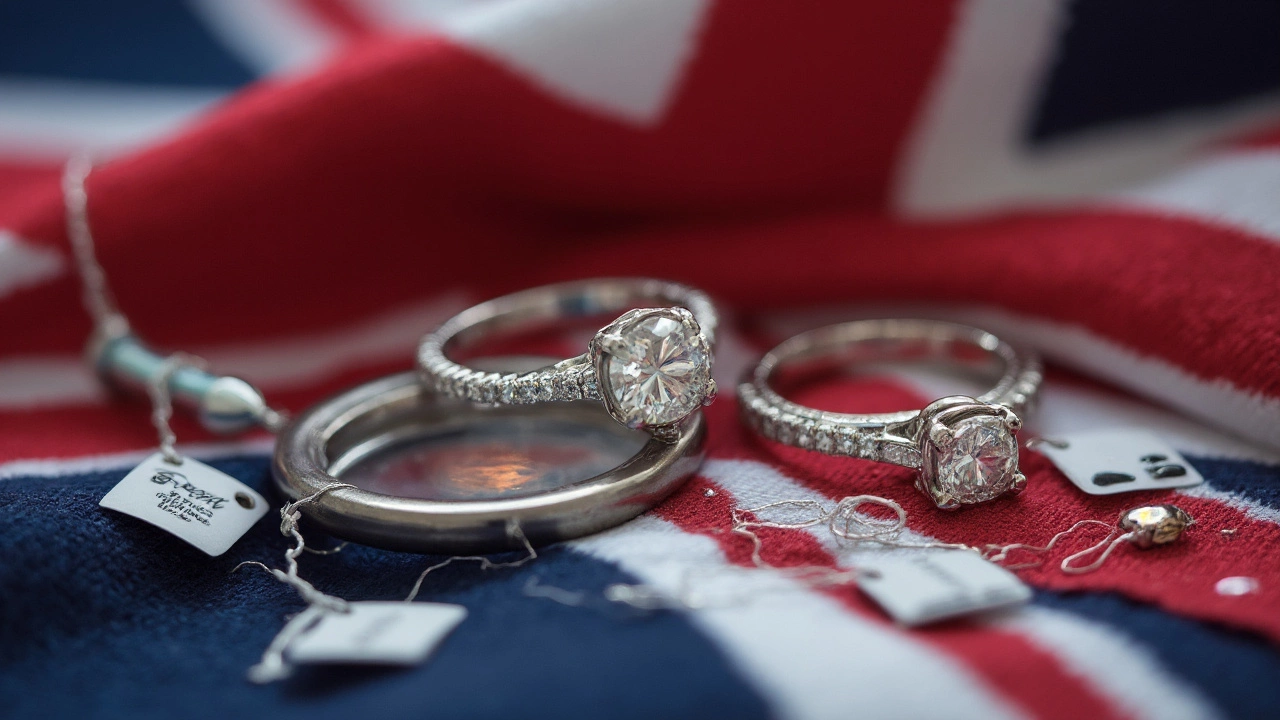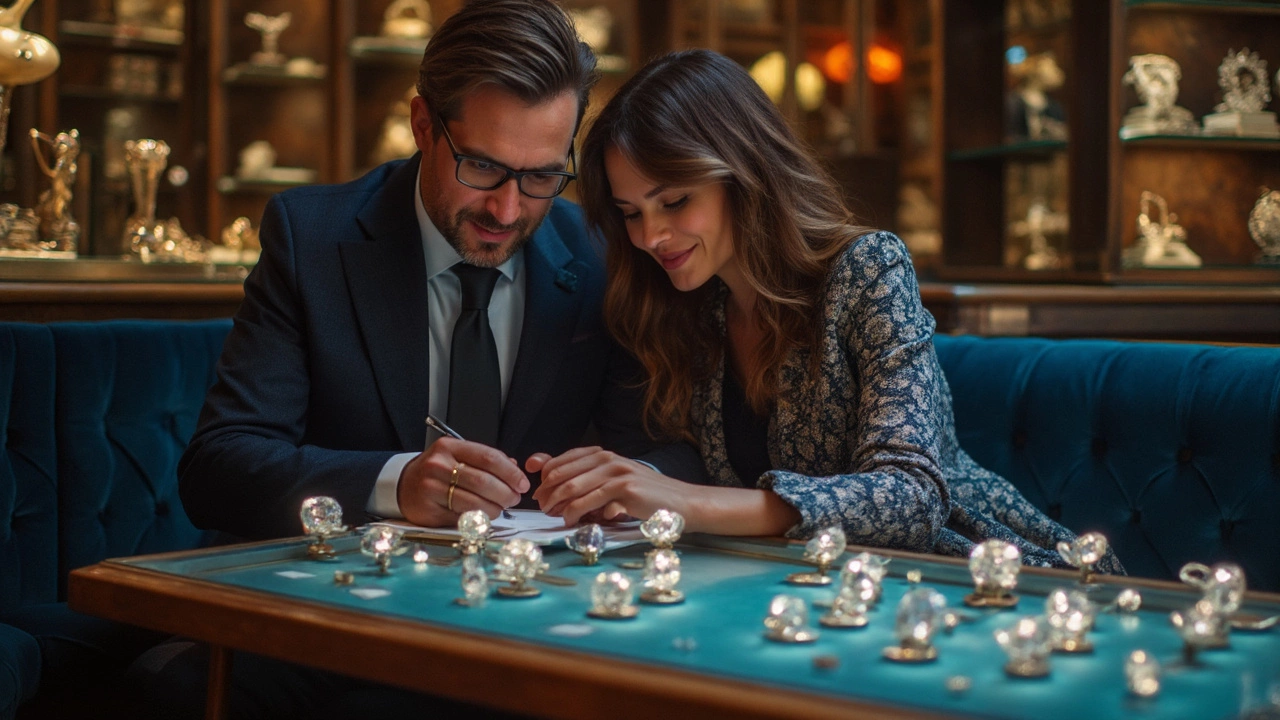Seriously, the number $10,000 has a weight to it. Drop that amount into any engagement ring conversation and you’ll see people raise their eyebrows—some in shock, others maybe thinking you’re generous. So, is it actually enough for the kind of ring you want?
First, let's be real about what $10,000 gets you in today’s market. You’re not just paying for a piece of jewelry. That price tag covers a mix of cut, clarity, color, carat, and of course, the brand and designer name, if that’s your thing. Right now, $10,000 can buy a great diamond—often hovering around 1.5 to 2 carats if you pick a classic style and avoid the super-premium brands. Really want to stretch that budget? You can get even more sparkle with lab-grown stones, which look identical to mined ones, but your money goes way further.
The truth is, $10,000 isn’t a magic number. It’s just a number. What you get depends on your priorities and how you shop. If you care more about ring design than diamond size, you’ll have options. If you want a super clean, big natural stone, you’ll need to know how to find deals or maybe give up the brand-name box. Either way, you’re in a good spot for very high quality.
- What $10,000 Actually Buys Today
- Popular Brands & Diamond Sizes
- How Expectations Have Changed
- Smart Ways to Get More for Your Money
What $10,000 Actually Buys Today
Here’s the simple truth: $10,000 is a solid budget for an engagement ring—especially in 2025. You’re not shopping in the bargain bin, but you’re also not burning stacks of cash just for the sake of it. So, what exactly does that kind of money get you?
For traditional, mined diamonds, $10,000 typically buys you a center stone between 1.3 and 2 carats, assuming you’re not set on a top-tier designer or a flawless, colorless diamond. If you care more about sparkle and less about perfection, you can go for a stone with a bit of color or lower clarity and push closer to the 2-carat line.
Lab-grown diamonds have flipped the game. With this budget, you could easily go over the 2-carat mark and pick out a super clean, visually stunning rock. Most people can’t tell the difference, and you get a lot more bling for your buck. In 2024, data from The Knot's annual jewelry report showed lab diamonds are up to 60% less expensive than mined ones. That means the same $10,000 goes way further if you’re open to new tech.
If you’re looking at gold bands, platinum, or even a halo setting, those details eat into your stone budget. For example, a custom platinum ring with a 1.5-carat G color, VS2 clarity round diamond from a big chain like James Allen or Blue Nile is right on target—with room for extras like engraving or side stones. Toss in a high-end brand like Tiffany & Co., and you’ll pay more for the name, often sacrificing diamond size or quality for the label.
“A $10,000 ring buys real quality, but whether it’s ‘enough’ comes down to what’s important to you—the size of the rock, the designer name, or the unique design,” says Stephanie Gottlieb, NYC-based jewelry designer known for her practical advice.
Don’t forget taxes and resizing fees. Most jewelers don’t include those in the sticker price, so always ask what’s really included. Want to avoid surprises? Get all the details at checkout, or you could end up blowing past your budget for things you didn’t expect.
Popular Brands & Diamond Sizes
When it comes to pulling the trigger on a ring, brand matters for a lot of people. Let's not kid ourselves—names like Tiffany & Co., Cartier, and Harry Winston are the rock stars of engagement rings. But here’s the catch: that little blue box can bump up the price, sometimes by thousands, for the same quality you’d get from a smaller or newer brand. If you want a brand name, just know that your dollar has to stretch a bit further for the logo.
Let’s break it down. Say you walk into Tiffany with $10,000. Most of their classic solitaire diamond rings in platinum start with a 0.8 to 1-carat center stone, depending on the specs. Cartier’s Love Ring (the one everyone recognizes) isn’t even a traditional diamond ring—it’s mostly metal, but their diamond rings, also around 1 carat, push close to your budget for the most basic options. Harry Winston’s prices, honestly, usually start above $10K for their engagement rings with a good-sized diamond.
You get more size for your money with less-famous retailers or online shops. Brands like Brilliant Earth and James Allen let you pick your diamond and setting, so $10,000 can score you 1.5 to even 2 carats, especially if you go for near-colorless or slightly included stones that still face up bright.
Lab-grown diamonds? Game changer. At Clean Origin or VRAI, $10,000 lands you a massive 2.5 to 3-carat stone, perfectly cut and super sparkly. These stones look just like natural diamonds but cost way less because they aren’t mined.
Here’s a quick comparison to see where $10,000 gets you as of early 2025:
| Brand/Retailer | Diamond Size (carats) | Notes |
|---|---|---|
| Tiffany & Co. | ~1.0 | Classic solitaire, premium brand |
| Cartier | ~1.0 | Basic settings, might need to up budget for extras |
| Brilliant Earth | 1.5-2.0 | Customizable, many diamond choices |
| Clean Origin (Lab-grown) | 2.5-3.0 | Big size, high quality, more options |
Bottom line: If showing off a brand is top of your list, know you’ll trade off some diamond size or features. But if a bigger, eye-catching diamond matters more, check out reputable online retailers or consider lab-grown options. Either way, $10,000 can get you a seriously impressive ring—just depends on what you want to flex: the logo or the rock.
And remember, shopping smart means comparing options and seeing the difference up close. Always check real photos, not just renderings, especially when you’re spending solid money.

How Expectations Have Changed
Ask someone a decade ago about the "right" amount to spend on an engagement ring and you’d probably hear that old “three months’ salary” rule. That idea actually came from a De Beers ad campaign in the 1930s—it’s not a life rule, just smart marketing. These days, nobody's following that blindly. People want to know what makes sense for them and their lifestyle, not just what an ad suggests.
Social media changed the game, too. Instagram and Pinterest are packed with giant sparkly rings, designer settings, and stories about wild proposals. But here’s the real story: according to 2024 data from The Knot, the engagement ring spend averaged $6,500 in the U.S.—way under $10,000. Yes, some folks are dropping way more, but most don’t break five figures. It’s not weird at all to see gorgeous rings in the $2,500 to $8,000 range, and lab-created diamonds are growing in popularity to help people keep costs down.
| Year | Average Ring Spend (USD) |
|---|---|
| 2015 | $5,871 |
| 2020 | $5,500 |
| 2023 | $6,000 |
| 2024 | $6,500 |
Another big change? Couples often shop together, set a budget, and discuss what actually makes sense for both people. What matters isn’t spending the most—it’s about getting something meaningful and not stressing your bank account. Rings are more personal now than ever, and that’s what stands out.
If you’re aiming for something special, $10,000 gives you a ton of choices. But just because you can spend it, doesn't mean you have to. Smart couples are putting their extra money toward other wedding expenses, a house, or epic honeymoons instead. Times have definitely changed—and honestly, most people think that’s for the better.
Smart Ways to Get More for Your Money
Ten grand sounds like a lot, but no one wants to pay more than they have to, right? If you want the most out of your $10,000 budget for an engagement ring, you need to know a few insider tricks. Honestly, a bit of research and smart shopping will go further than you think.
First off, consider lab-grown diamonds. These look identical to natural ones and according to the International Gem Society, they can cost 40–50% less. That means you could get a bigger rock or better quality without shelling out more cash.
Don’t get stuck on the round diamond trend, either. Fancy cuts—like oval, pear, or cushion—tend to cost less per carat while appearing larger. The Gemological Institute of America actually confirmed that oval and pear cuts can look up to 10% bigger than same-weight rounds because of their shape.
- Go just under the magic numbers. For example, pick a diamond that’s 1.9 carats instead of 2.0—there’s a price jump at every major milestone, even if no one can see the weight difference.
- Say yes to eye-clean but lower clarity. Most people can’t spot inclusions without a microscope, so you can spend less on perfection no one notices.
- Shop online from trusted retailers. Brick-and-mortar stores may charge 15–25% more, as reported by Business Insider in 2024.
- Negotiate. Seriously, ask for discounts, extras, or a free resizing. Jewelers have more wiggle room than they admit.
Here's a quick breakdown of average price differences, so you can see where your money goes:
| Diamond Type | Average Price (1.5 ct, G-H color, VS2 clarity) |
|---|---|
| Natural, Round | $11,800 |
| Lab-Grown, Round | $5,900 |
| Natural, Oval | $10,100 |
| Natural, Cushion | $9,400 |
Stick to these tips and your engagement ring will look like you spent more than you did—without the debt or regret. Just remember: the girl, not the ring, is supposed to shine most.
